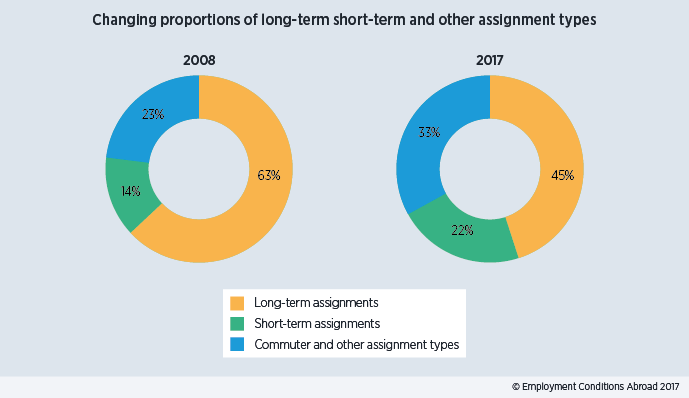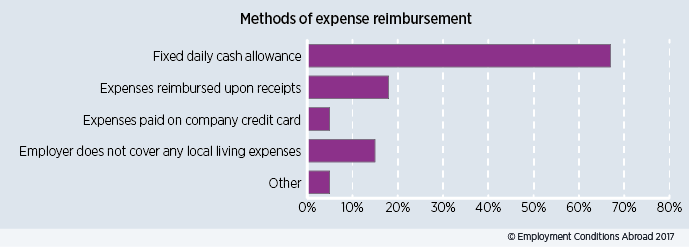Short-term international assignments have many tricky nuances from immigration, employment law, payroll, tax, and other related perspectives. Management of these types of assignments has become a major challenge for many companies, as different departments and business units frequently initiate them. Assumptions that sometimes are made with respect to the nature and duration of a short-term assignment, as well as the taxation, immigration, and other issues surrounding the assignment, can get an employer and the employee into difficulties.
This first article focuses on why short-term assignments are growing in popularity and how companies are structuring packages.
Trends
Today it is no longer surprising to find that an executive of a global organisation has had some experience working in a country outside of their head office, as many employers consider international experience to be desirable for career progression. Likewise, many employees now consider international assignments an important ticket to get stamped to improve their career prospects.
However, mobility barriers remain a challenge for employers with many employees reluctant to accept a long-term international assignment. Besides the growth of the two-career family and social/family concerns of an employee, one of the main difficulties in attracting the right calibre of candidate to accept an international assignment is an individual’s unwillingness to go to ‘non-family friendly’ locations or territories perceived as risky.
For both employer and employee, short-term assignments fulfil many of the criteria demanded by our 21st century lifestyles: flexibility, variety, immediacy and minimal family disruption. Research shows that use of short-term assignments, which typically last from three to 12 months, has risen considerably over the past decade with short-term assignees making up over 20 percent of companies’ internationally mobile workforces.
Their rise in popularity is due to a few factors, including changing workforce demographics, the need to plug skills gaps and accelerate the development of employees with leadership potential, increased focus on costs and as a means to overcome mobility barriers.

How do companies structure packages?
Employees normally remain on their home compensation and benefits plans while on assignment and continue to be paid through their usual payroll. There is, however, a wide range of practices between companies in the level of living allowances, types of incentives, and even the number of times they will pay for trips home for employees to visit their families.
Daily living expenses
Provision of daily living expenses is an area where companies use many different approaches. Expenses include not only accommodation but also often meals, transport, laundry, etc. This means lots of individual claims to audit and process. The most popular approach is to establish one fixed daily allowance to cover the cost of food, transport and incidentals for all short-term assignees at the same location (almost 70 per cent of companies). However, nearly 20 per cent of companies report that they reimburse actual day-to-day living expenses for their assignees. What is the most effective approach? That depends on the number and type of short-term assignees that a company is trying to manage.
Several participants apply more than one approach to cover costs, taking into account variables such as the type of accommodation, length of assignment etc.

Source: ECA’s Managing Variety in International Mobility survey
For instance, a company with 25 international assignees may pay approximately four bills per day per assignee. If the company reimburses the assignees directly, that's a total of 3,000 expense claims per month for short-term assignees alone. Even assuming some of these claims would be combined on a single expense form with other expenses, the numbers are still significant, and so is the administration necessary to audit, process, pay, report and store the expense reports.
A possible solution to reduce the volume of claims processed is to pay a fixed daily cash allowance either in the form of a short-term allowance or a per diem instead. The allowance or per diem can then be paid through the payroll, requiring only an instruction at the appropriate time to start and stop payment.
In addition to reducing administration, paying an allowance or per diem changes an unknown, unlimited cost into a known fixed cost. And if that's not reason enough, it is an environmentally friendly approach as an allowance encourages assignees not to be wasteful since they aren't being reimbursed for unlimited costs but must work to a budget.
A short-term allowance or per diem also saves assignees time as they do not have to keep receipts for even the smallest of expenses incurred and fill out multiple expense forms in the first few weeks in the host location when they should be concentrating on settling into a new job.
It should be noted that depending on the expense item and the tax jurisdiction, there may be tax implications associated with paying a short-term allowance or per diem rather than reimbursing an actual cost. Any administrative savings gained by paying an allowance need to be compared against possible increases in the associated tax burden.
Incentives
According to ECA’s research, less than 50 per cent of companies say that they provide mobility incentives for short-term assignments (which typically run from 10 per cent to 15 per cent of the monthly base salary), whereas this mobility allowance is commonly paid for long-term assignments (62 per cent of companies using the home-based approach). Companies electing to pay the allowance specify that financial incentives can help encourage employees to accept an international assignment to more challenging or difficult locations or short-term assignments with strategic or high-risk objectives. Others cite the use of this allowance to compensate for the inconveniences and costs incurred by family separation.
The issue of location (hardship) allowances follows a similar pattern to mobility incentives. Consistency with long-term assignees working at the same location is the main reason nearly half the companies also pay location allowances to short-term assignees. The other 50 per cent of companies will usually argue that, as short-term assignees normally leave their families at home, they are far less exposed to ‘hardship factors’ than assignees who have their families living with them at the host location. Conversely, the payment of a location allowance is more prevalent with companies in the construction, civil engineering, mineral and mining, non-profit, oil and gas and telecommunications sectors with the number of companies providing this allowance increasing to over two thirds.
|
|
Mobility premium
|
Location allowance
|
| |
Short-term
|
Long-term
|
Short-term
|
Long-term
|
|
Always provided
|
26%
|
62%
|
47%
|
78%
|
|
On a case by case basis
|
17%
|
~
|
~
|
~
|
|
Not provided
|
57%
|
38%
|
53%
|
22%
|
Source: ECA’s Managing Variety in International Mobility survey
Trips Home
Employees undertaking short-term assignments are rarely accompanied by their partner and/or family, who often opt to stay at home because of the shorter nature of the assignment. This leads to a wide variation in practice relating to trips home and it is surprising, given that this is a critical policy issue, that many companies do not appear to have clear guidelines in place.
Typically, companies permit one company-funded trip home every 12 weeks for employees whose families have remained at home. However, some companies allow the partner to visit the assignee in the host country in lieu of the assignee returning home. Others have a less structured approach towards home leave trips whereby some short-term assignments are treated more like commuting arrangements. When this is the case, the family stay behind and the employee travels home regularly, perhaps on weekends or for a full week once every month or two. Inexpensive flights and short distances make spending weekends at home feasible. Hence, the line separating a short-term assignment from a commuting one is becoming increasing blurred and costly, as assignees request more frequent travel back home to overcome mobility barriers caused by personal or family circumstances.
We will share more ideas about the compliance challenges involved with short-term assignments in our next article.
FIND OUT MORE
Please contact us to speak to a member of our team directly.